
Springfield, Mo. - Almost 200 cats were euthanized at the Southwest Missouri Humane Society (SMHS) after a suspected outbreak of the fast-spreading killer strain of calicivirus.

Springfield, Mo. - Almost 200 cats were euthanized at the Southwest Missouri Humane Society (SMHS) after a suspected outbreak of the fast-spreading killer strain of calicivirus.
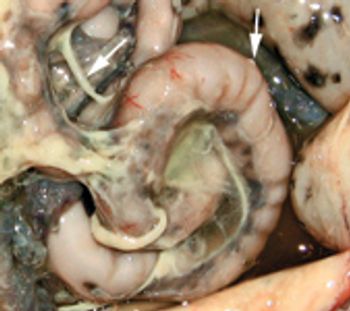
A 1-year-old castrated male domestic shorthaired cat was presented for evaluation of a 10-day history of lethargy, anorexia, decreased water consumption, and apparent discomfort.

Richmond, Va.- State veterinary officials quarantined six farms in northern Virginia that could have come in contact with a horse infected with equine herpes virus-1 (EHV-1).

Madison, Wis. - A University of Wisconsin-Madison veterinary school virologist was recognized for his research on how influenza viruses replicate and the genetic contributors to virulence.

Orlando, Fla.- Fort Dodge Animal Health reports it received licensure of CaliciVaxâ„¢, the only vaccine licensed and proven effective against the deadly virulent systemic feline calicivirus (VS-FCV), which has emerged in the United States.
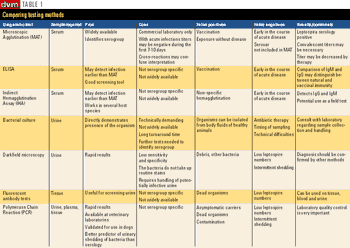
The test proved to be accurate, easy and cost-effective. But further documentation is needed.

Canine rickettsial infections are important causes of morbidity and mortality worldwide.

Raleigh, N.C. - Rabies cases in North Carolina rose 13.5 percent in 2006 and 13 already have been identified this year, officials with the North Carolina Division of Public Health report.

MADISON, WI - 1/25/07 - In a study of nonhuman primates infected with the influenza virus that killed 50 million people in 1918, an international team of scientists found a critical clue to how the virus killed so quickly and efficiently.

Schaumburg, Ill. - Reported rabies cases dropped in 2005, according to a report in the December Journal of the American Veterinary Medical Association (JAVMA).

Auburn, ALA. - 12/05/2006 - An Auburn University veterinary professor, in collaboration with researchers at Vaxin Inc. of Birmingham, has developed the first in ovo vaccine to protect chickens against avian influenza.

Kennel cough is a persistent problem

Lexington, Ky.- In combating an infectious disease outbreak, communication is key.
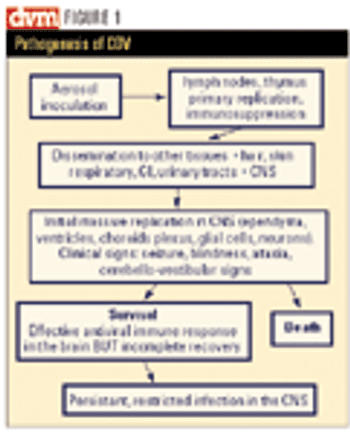
Canine distemper is a debilitating, persistent infection of the nervous system, caused by an enveloped single-stranded RNA virus that belongs to the family of Paramixovirid?, Morbillivirus genus.

This virus is transmitted directly dog-to-dog. In fact, it is the first time that influenza has demonstrated efficient horizontal dog-to-dog transmission.

Harrisburg, Pa. - Pennsylvania began its oral rabies baiting program in August.

DAVIS, CALIF. - 9/8/06 - Corvids, including American crows, Yellow-billed Magpies, Western scrub-jays and other members of the Corvidae family, serve as the primary reservoirs or incubators for the mosquito-borne virus, according to research entomologist William Reisen of the Center for Vectorborne Diseases (also known as CVEC), a unit of the UC Davis School of Veterinary Medicine.

The loss of more than $60,000 and interruption of her veterinary practice wasn't what kept Dr. Marlene Pinera awake at night...

Duluth, Ga.- Merial announces the release of Recombitek? KC2, an intranasal vaccine that protects dogs from infectious tracheobronchitis.

Necropsy is one of a clinician's best teachers; are we staying sharp?
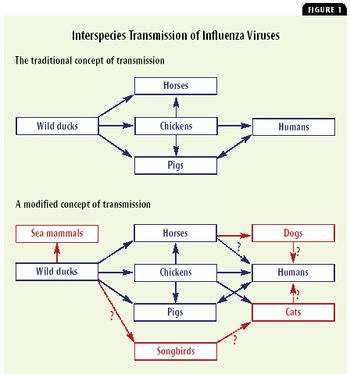
Historically, cats have been considered to be resistant to influenza virus infections.

Fort Collins, Colo. - A study led by Colorado State University (CSU) researcher Ken Olson shows that mosquitoes can be genetically engineered to be weapons against infectious diseases.
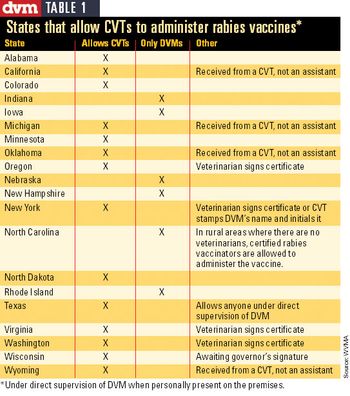
Madison, Wis.- A bill that would allow certified veterinary technicians to administer rabies vaccinations under the direct supervision of licensed veterinarians awaits the blessing from Wisconsin Gov. Jim Doyle.
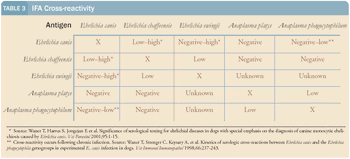
In patients with clinical signs of one tick-borne disease, it is important to consider that they may be infected with multiple tick-borne pathogens. Coinfections may account for the diverse clinical signs some patients exhibit.
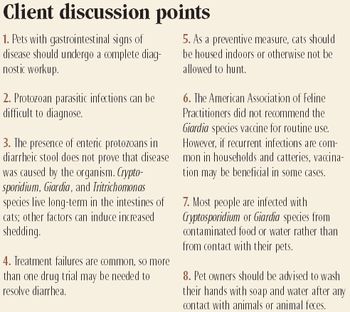
Gastrointestinal parasites are insidious causes of disease in cats. Protozoan parasitic infections in particular can be difficult to detect because there are often no signs of disease, or the signs, such as diarrhea, are nonspecific. But these infections must be uncovered and cured before they cause serious disease or spread to housemates or even owners.